6 Best Lateral Head Triceps Exercises (with Pictures!)
Too often, lifters will find that the lateral or outer head of their triceps brachii begins to become eclipsed by their inner-and-medial tricep heads, either as a result of their exercise selection or because of genetically-dictated attachment points.
Performing exercises that primarily target the lateral head of the triceps can allow lifters to improve the strength of their arms in their specific range of motion, as well as create a thicker and more “3-D” appearance of their upper arm.
A few good examples of such exercises are the dumbbell tricep kickbacks, the close grip bench press and even the diamond push-up - all of which involve greater lateral tricep head contraction.
What is the Lateral Head of the Triceps?
Before delving into the most effective lateral tricep head exercises, it is important to first understand what the lateral head even is.
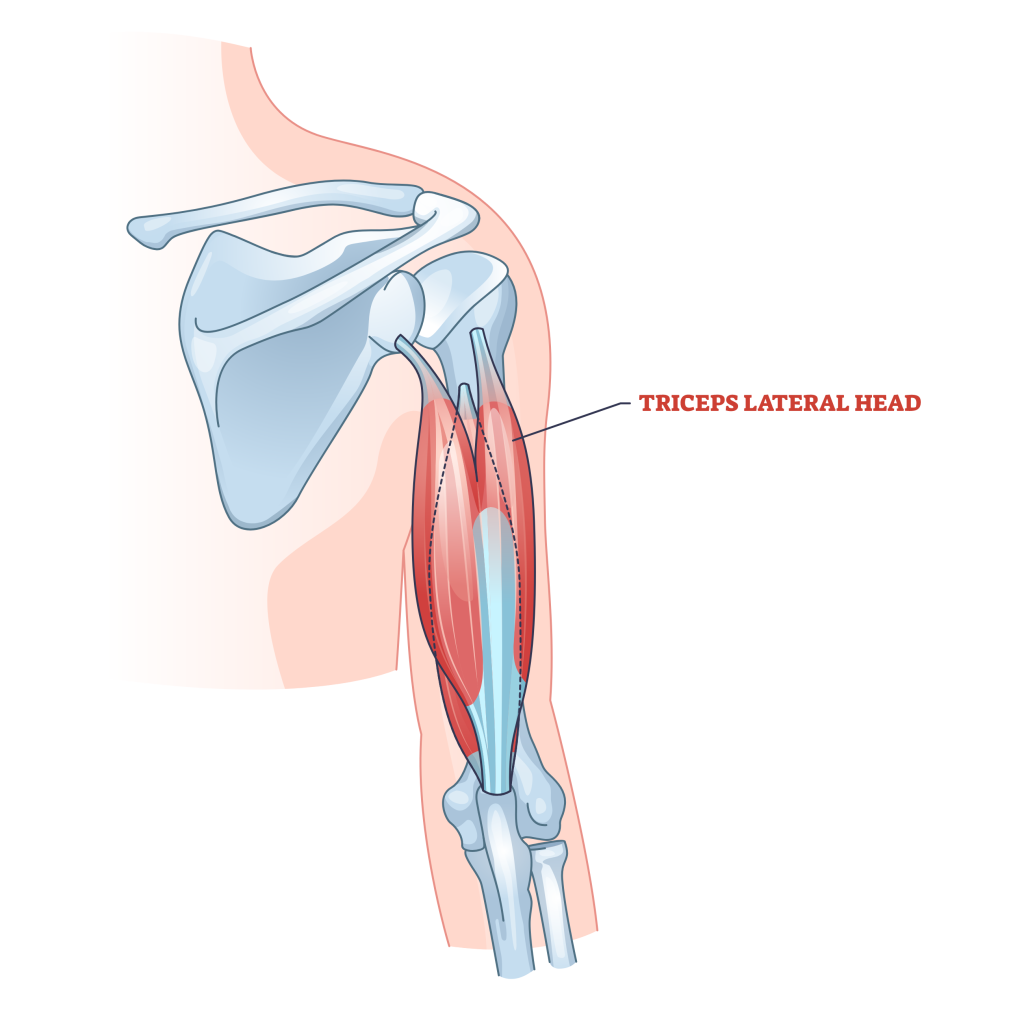
The triceps brachii is a three-headed muscle group located along the lateral and posterior section of the upper arm, and is generally responsible for elbow extension and shoulder stabilization. Such mechanics are commonly encountered in pushing, pressing or overhead extension exercises, often with an overhand or neutral grip.
When speaking specifically of the “lateral” or “outer” head of the triceps, we are referring to the section of the muscle that is most visible when viewed from the side, and features an attachment point at the humerus bone. It is in its most advantageous position when the shoulder is opened above a 90-degree angle.
How Is the Lateral Tricep Head Trained?
The lateral tricep is primarily trained by movements involving elbow extension as a primary mechanic.
In particular, pressing or pushing exercises with the hands set closer together and the shoulders rotated at 90-degrees or wider will target the lateral tricep head to the greatest extent.
Best Lateral Head Tricep Exercises
1. Dumbbell Tricep Kickbacks
The first exercise we should investigate when targeting the lateral tricep head is the tricep kickback; a traditionally dumbbell-based isolation exercise that simply requires the lifter “kick back” their hands while bent over, targeting the triceps with a particular emphasis on the outer or lateral head.
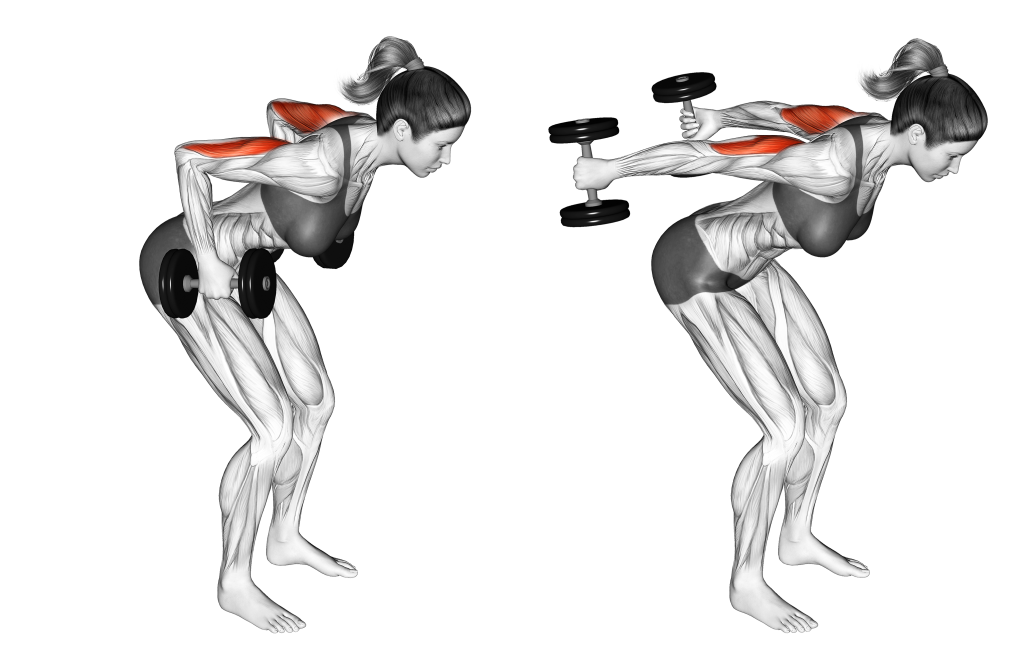
Dumbbell tricep kickbacks are relatively accessible and easy to perform, and are primarily used as an accessory movement alongside heavier compound movements that also work the triceps.
Equipment Needed
As the name implies, tricep kickbacks are usually performed with a single dumbbell, although a kettlebell or weight plate may also be used.
Benefits as a Triceps Exercise
Tricep kickbacks are the perfect tool for adding additional lateral head volume into a workout - all without any significant increase in risk of injury or joint impact.
Furthermore, they are excellent for acting as a high-volume isolation exercise, and are accessible to even novice weightlifters.
How-to:
Bending at the hips, the lifter will grip a dumbbell in one hand as they press the elbow of the same arm against their side, ensuring that the torso is supported and the lower back in a neutral position.
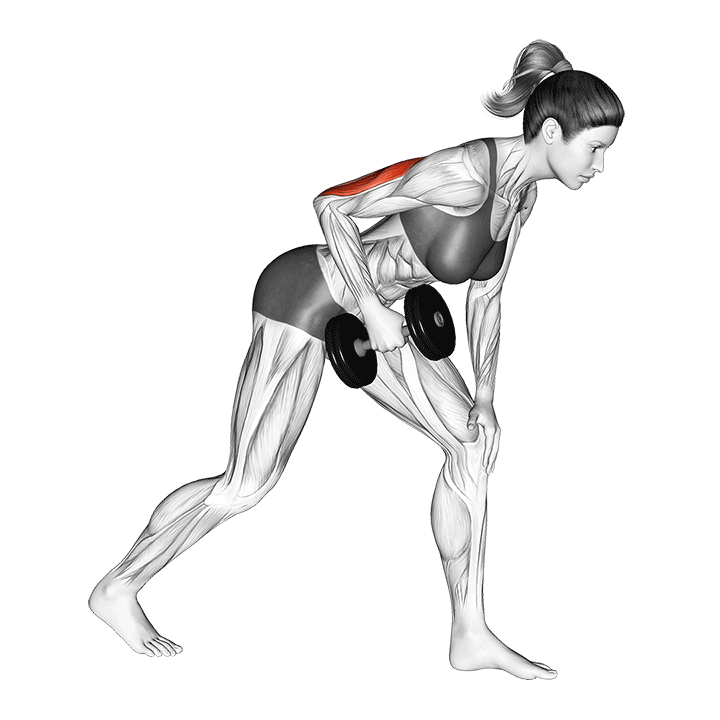
Then, contracting the triceps, the lifter will slowly extend their arm behind them, drawing the dumbbell back until the elbow is nearly locked out.
From this point, they will then reverse the motion in a slow and controlled manner, thereby completing the repetition.
2. Close Grip Bench Press
For a more compound and resistance-focused lateral head exercise, the close grip bench press is the best bet.
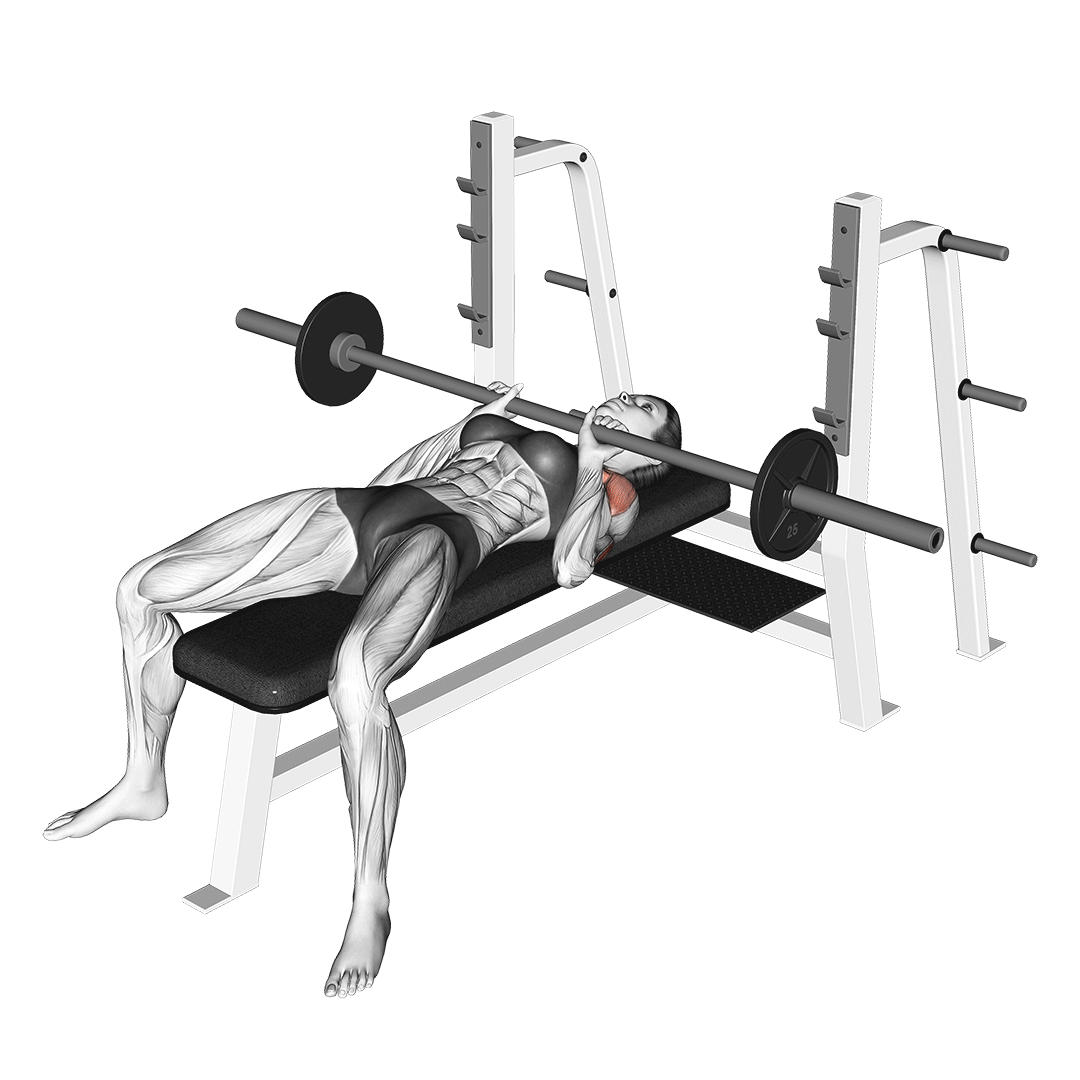
Much like the conventional bench press, the close grip bench press is a multi-joint compound exercise performed with the lifter lying on their back and repeatedly pressing a barbell away from their chest.
In terms of mechanics, the sole difference is the fact that the hands are placed closer together, meaning that more attention must be paid to forearm orientation and a relatively smaller amount of weight will be used.
Equipment Needed
The close grip bench press will require a barbell rack, barbell, a set of weight plates and an exercise bench.
Benefits as a Triceps Exercise
Although the close grip bench press primarily targets the lateral head, it nonetheless recruits the entirety of the triceps brachii to a highly intense extent - as well as the deltoids and pectoral muscles.
This allows it to act as both a primary or accessory compound movement in a manner that builds up upper-body strength and power.
How-to:
To perform a repetition of the close grip bench press, the lifter will lie atop a bench with their hands set approximately shoulder-width apart, elbows tracking forwards and flaring as little as possible.
The shoulder blades should remain retracted throughout the set and the lower back arched if so desired.
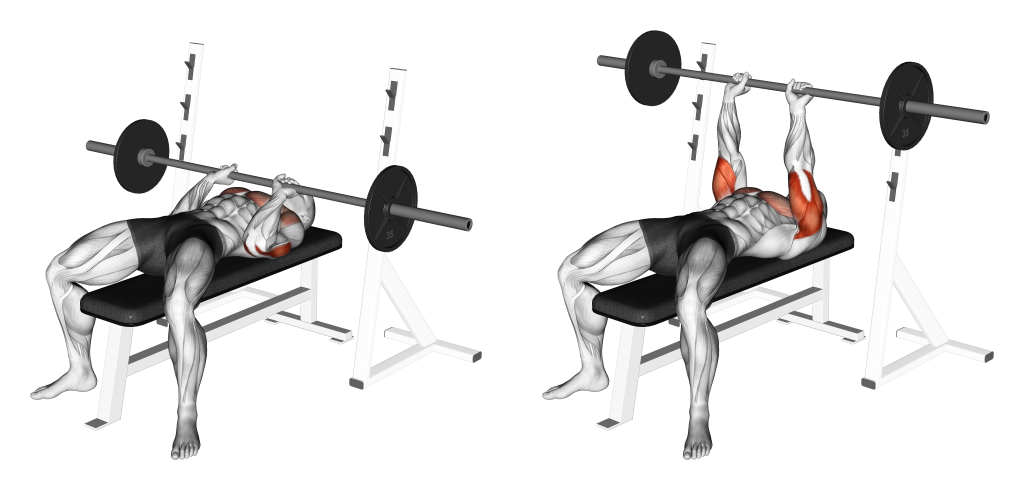
Then, bending at the elbows, the lifter will lower the barbell towards their chest.
Once the barbell makes contact with the torso, the lifter will push through the palms of their hands and press the barbell back up - thereby completing the repetition.
3. Barbell JM Press
An unconventional compound exercise that is particularly useful for targeting the lateral tricep head; the barbell JM press is a technically-complex movement performed with the lifter lying on their back as they perform a movement akin to that of a skull crusher - although with a narrow grip and lower barbell position.
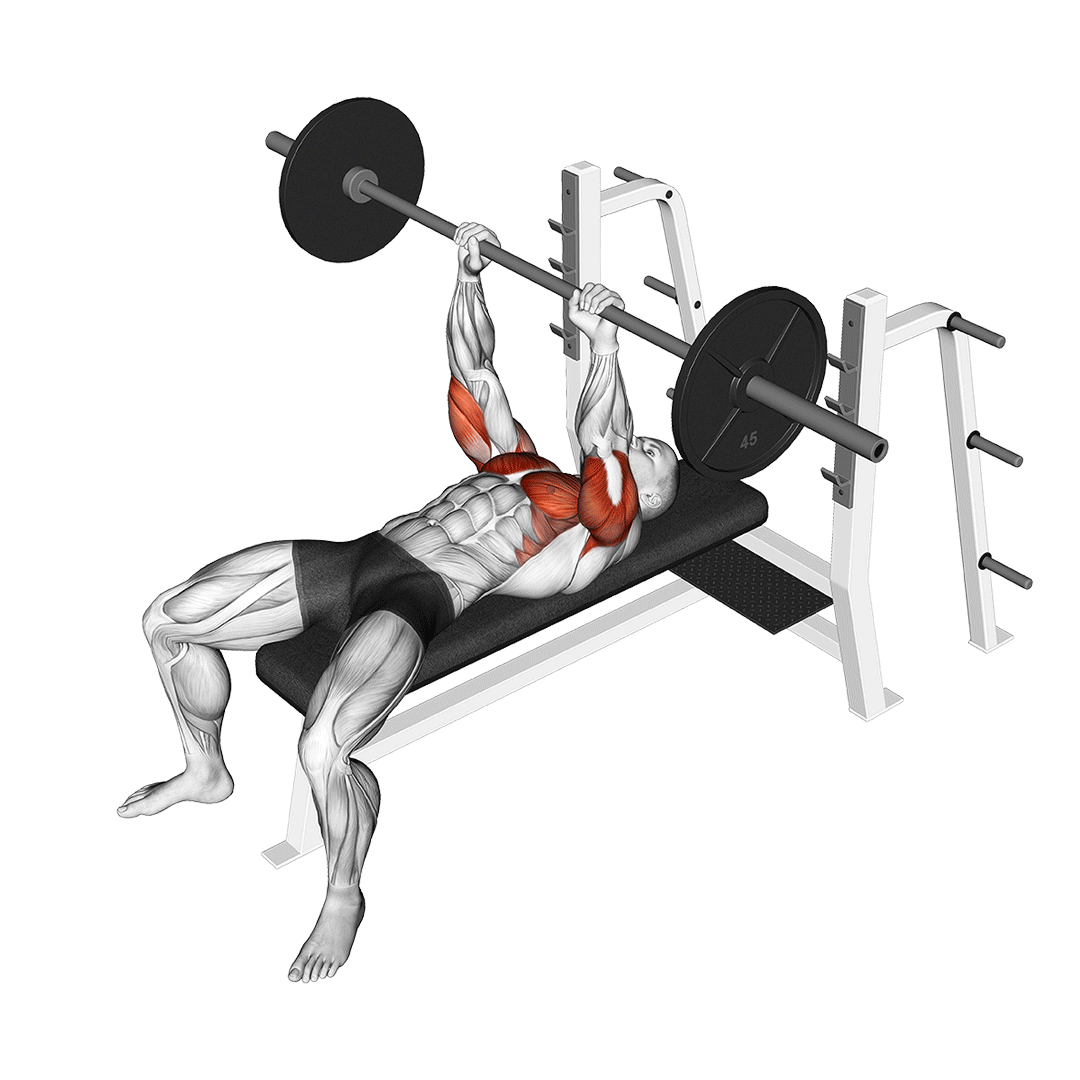
Because the JM press is somewhat technical and involves moving a relatively large amount of weight over the face and neck, it is best for novice lifters to avoid performing the exercise.
Equipment Needed
The JM press will require a barbell, set of weight plates and an object to lie on, such as an exercise bench.
Benefits as a Triceps Exercise
The JM press allows for significant loading of the entirety of the triceps brachii while still emphasizing the lateral head - all in a manner that features a rather unique angle of resistance.
While the JM press is primarily used as an accessory movement, it can also be quite effective when employed as a secondary compound exercise alongside similar movements like the bench press or push-up.
How-to:
To perform a repetition of the JM press, the lifter will lie atop an exercise bench with their shoulder blades retracted and their hands set approximately shoulder-width apart along a loaded barbell.
Keeping the bar vertically over the collarbones, the lifter will bend at the elbows and pull their shoulders backwards, lowering the barbell until it is approximately over their face as the elbows remain in the same position throughout the movement.
Unlike during a bench press, the lifter will lower the barbell with the elbows remaining in the air, as if performing a skullcrusher.
Once the barbell is over the face of the lifter, they will simply press it back up to the original position - thereby completing the repetition.
4. Straight Bar Underhand Cable Tricep Pushdowns
The ever-popular triceps isolation exercise that is the tricep pushdown can be made to further emphasize the lateral head by using a straight bar attachment - allowing for an underhand grip to be used as well.
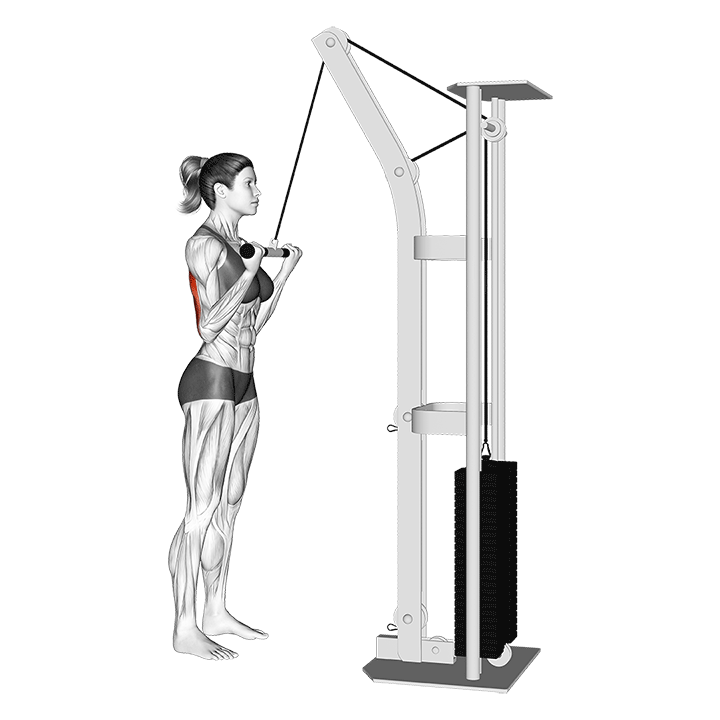
Just as is the case with the conventional tricep pushdown, the straight bar underhand variation is primarily a single-joint machine-based exercise used for significant volume and a low amount of resistance - often as an accessory movement to heavier compound exercises like the bench press or overhead press.
Equipment Needed
This particular variation of the tricep pushdown will require a cable machine and a straight bar handle attachment.
Benefits as a Triceps Exercise
The straight bar underhand pushdown is both simplistic and effective at hitting the triceps brachii with significant training volume - especially in regards to the lateral head, of which will be worked the most as the lifter extends their elbows with each repetition.
Furthermore, the fact that the tricep pushdown is self-stabilizing and considerably safer than most other triceps exercises means that it is highly accessible to lifters of all backgrounds, as well as relatively easy to program into a workout.
How-to:
Standing facing the cable housing with both hands in an underhand grip around the bar, the lifter will bend slightly at the hips and keep their elbows stationary as they push the bar downwards, focusing on contracting their triceps as they do so.
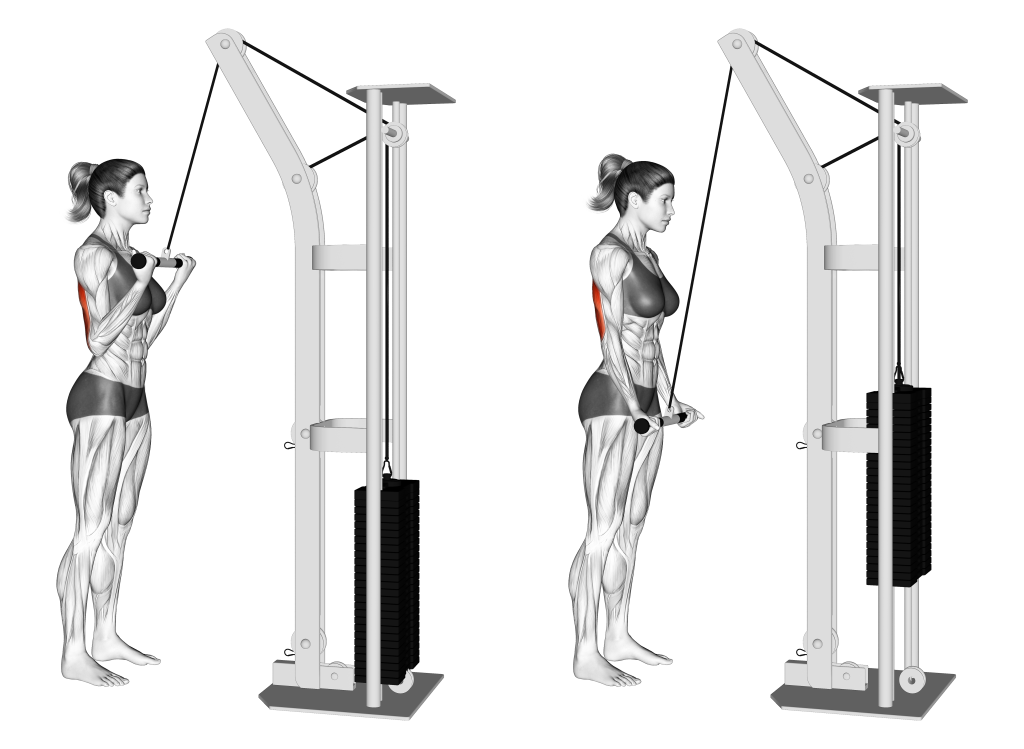
It is important for the lifter to remember that they are not curling the handle, but instead pushing it downwards. The wrists should remain neutral throughout the movement and no activation of the biceps should occur.
As the elbows reach the point of full extension, the lifter will slowly return the handle to its original position, bending their elbows once more and thereby completing the repetition.
5. Diamond Push-Ups
If the lifter is away from the gym or prefers a more calisthenic-based lateral tricep head workout, few bodyweight exercises allow for the intensity and volume that the diamond push-up is capable of.
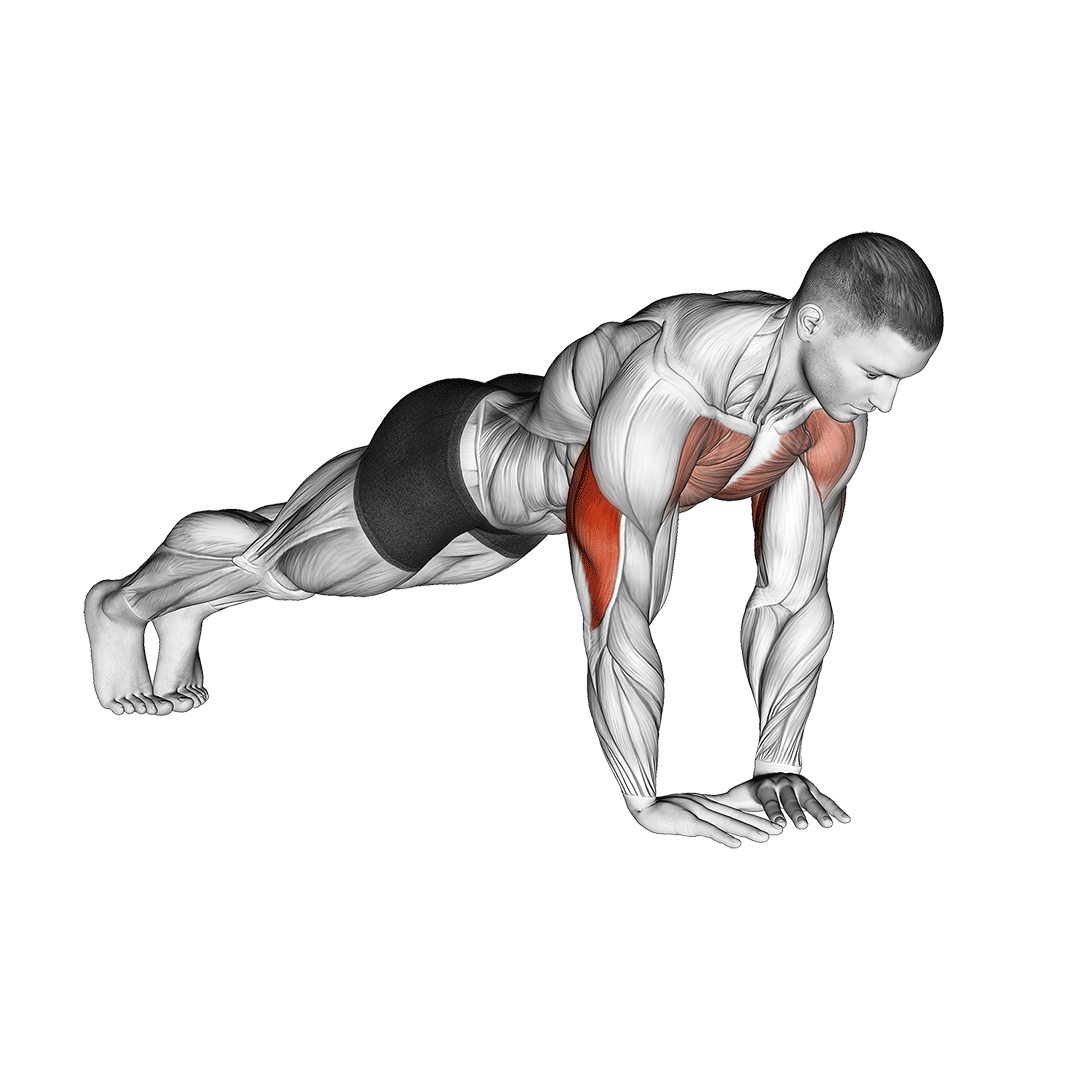
The diamond push-up is a more advanced variation of the conventional push-up where the lifter places their hands closer together beneath the torso, forming a sort of diamond shape with their fingers - hence the name.
Depending on the sort of workout the lifter wishes to perform, the diamond push-up is either employed as the main source of upper body training stimulus (including the triceps) or is used as an accessory movement for targeting the lateral head of the triceps alongside the rest of the push muscles.
Equipment Needed
The diamond push-up requires no equipment whatsoever.
Benefits as a Triceps Exercise
The diamond push-up is a compound movement, and as such is not strictly a triceps exercise as much as it is a chest, triceps and deltoids exercise. While this may make isolating the lateral head somewhat more difficult in practice, it allows for greater upper body explosiveness and training intensity to be achieved.
Furthermore, solely speaking within the context of training the lateral tricep head, the diamond push-up is arguably one of the most accessible bodyweight exercises for such purposes - beaten out only by bench dips.
How-to:
Entering the conventional push-up stance but with the hands set beneath the chest and the elbows kept close to the torso, the lifter will contract their core and ensure that the torso is straight before beginning the repetition.
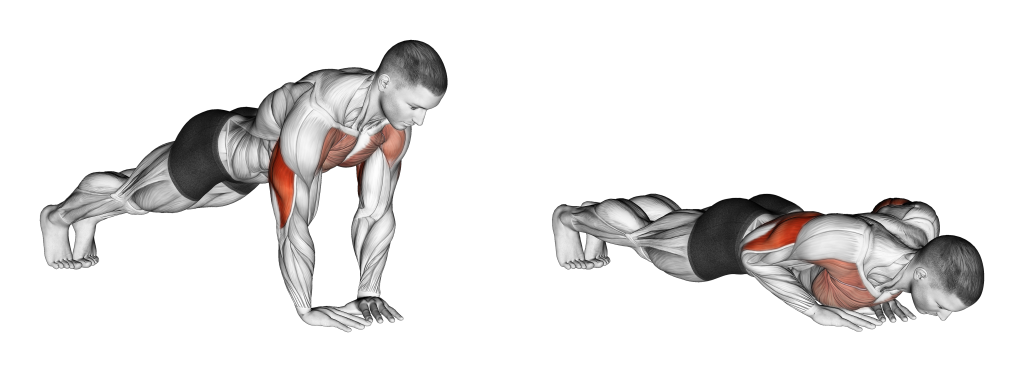
Bending at the elbows and drawing them backwards (rather than flaring out to the sides), the lifter will lower their chest towards the floor, taking care not to hyperextend the wrists as they do so.
Once within several inches of touching the ground, the lifter will push through the palms of their hands and rise back to their original position, thereby completing the repetition.
6. Bench Tricep Dips
Otherwise known as simply “tricep dips”, the bench dip is a bodyweight exercise primarily employed by calisthenic athletes as a method of creating significant triceps volume without necessarily straining the pectoral or deltoid muscles.
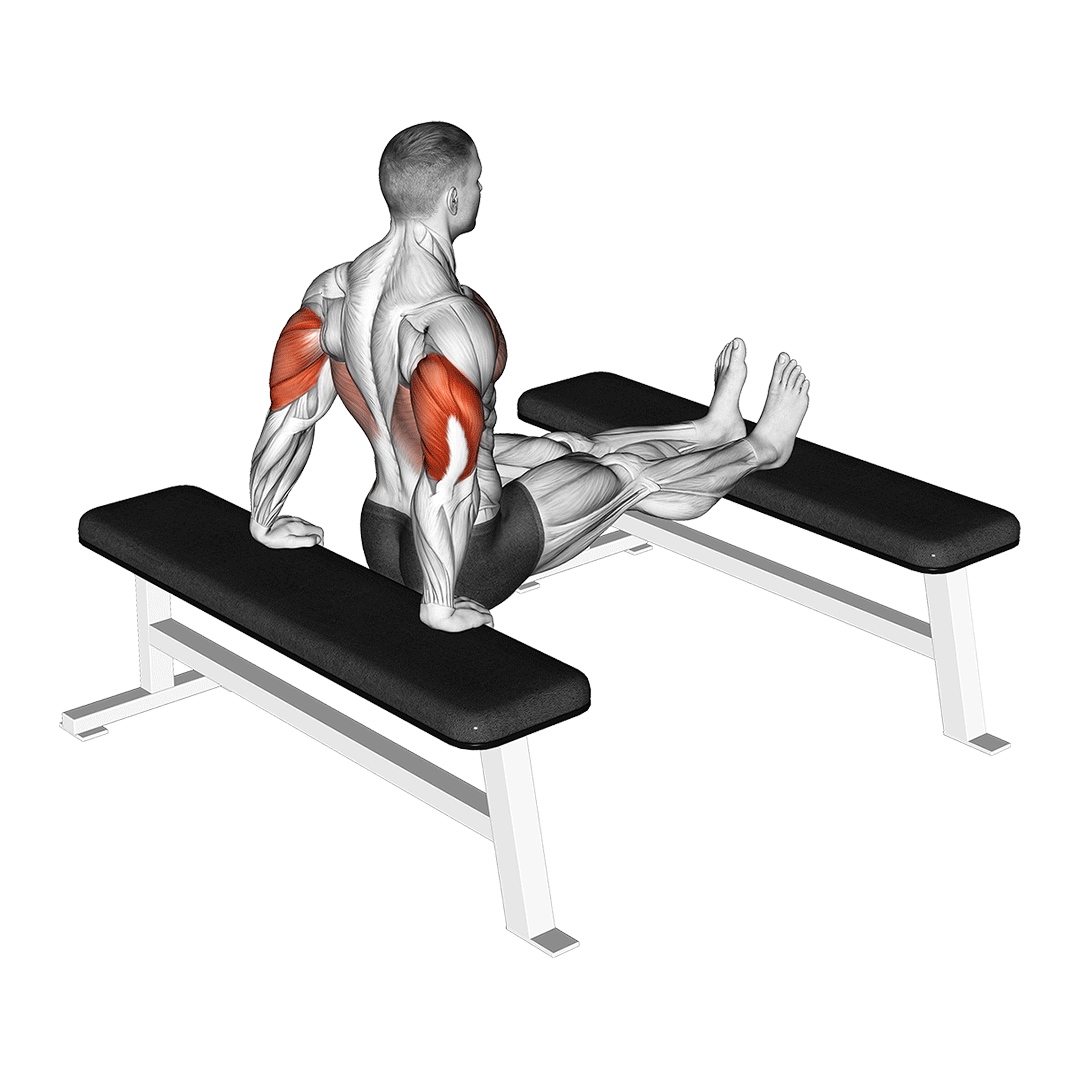
While bench dips will work the entirety of the triceps to a great extent, lifters with decent mobility can set the hands closer together and their fingers facing forwards so as to elicit greater lateral tricep head recruitment.
Equipment Needed
Bench dips will require a bench or similarly sturdy and stable object from which to dip from.
Benefits as a Triceps Exercise
Bench tricep dips are accessible to even complete novices, and will generally allow for significant emphasis on the lateral head of the triceps to be achieved without the need for any training equipment or advanced familiarity with resistance exercises.
Even for more advanced lifters, the tricep dip can be a highly effective method of boosting triceps volume without the need for additional equipment, further joint strain or even changes to their training program.
How-to:
Suspending themselves at the edge of the bench with their fingers facing forwards and the legs extended before them, the lifter will bend at the elbows and lower their body until their upper arms are parallel to the floor and a stretch is felt in the triceps.
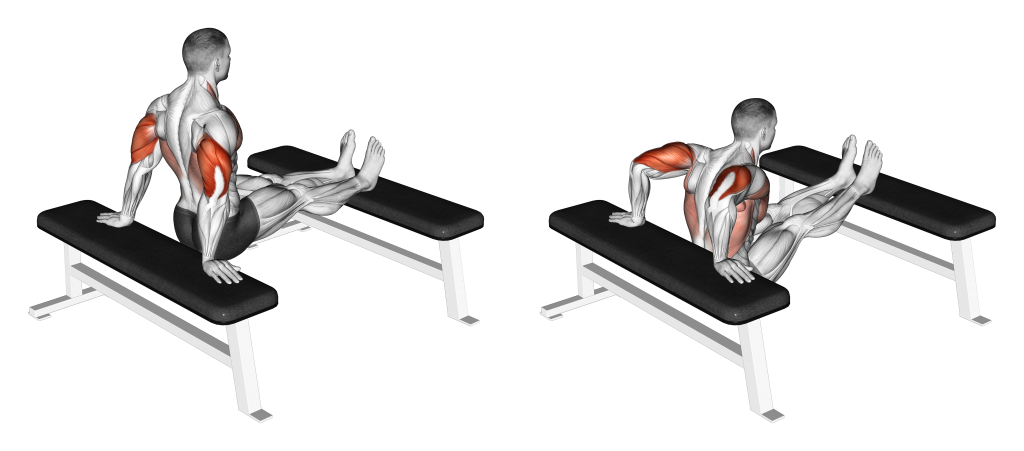
The legs should play no role other than a stabilizing one in this exercise, and it is best if the soles of the feet are off the ground, if the lifter is stable enough.
Once the upper arms are parallel to the floor, the lifter will press through their palms and extend their elbows, drawing their torso back to its original position suspended off the edge of the bench.
From this point, the repetition is considered to be complete.
Frequently Asked Questions (FAQ)
How Can I Target my Lateral Triceps at Home?
To target the lateral head of your triceps at home, you can perform bench dips or diamond push-ups - both of which place significant emphasis on the triceps brachii as a whole, but nonetheless still emphasize the lateral portion as well.
How do you Build the Lateral Head of Your Tricep With Dumbbells?
There are quite a few dumbbell exercises that work the lateral head of the triceps, with a few good examples being the dumbbell kickback, the dumbbell overhead extension and even the close grip dumbbell chest press.
Is the Bench Press Enough for the Lateral Triceps?
Although the conventional bench press does hit the lateral tricep head quite well, it is a heavy compound exercise that fails to isolate the muscle in a way that maximizes possible growth.
A better approach would be to perform the bench press alongside exercises like the tricep kickback or tricep pushdown - both of which will help maximize triceps growth, especially in the lateral head.
Final Thoughts
Although we’ve listed the best lateral triceps exercises in this article, keep in mind that the triceps brachii works as a unit, and as such any exercise that recruits the other heads of the triceps will also target the lateral head as well.
In truth, it is difficult to only grow one section of a muscle group by itself, and may unnecessarily complicate your programming.
If you find your triceps to be unbalanced in appearance or if you have a particular sticking point due to weakness in the lateral head, it may be a better idea to investigate the reason as to why the lateral head of your triceps is underdeveloped, rather than seeking to add even further exercises to your program.
References
1. Kholinne E, Zulkarnain RF, Sun YC, Lim S, Chun JM, Jeon IH. The different role of each head of the triceps brachii muscle in elbow extension. Acta Orthop Traumatol Turc. 2018 May;52(3):201-205. doi: 10.1016/j.aott.2018.02.005. Epub 2018 Mar 2. PMID: 29503079; PMCID: PMC6136322.
